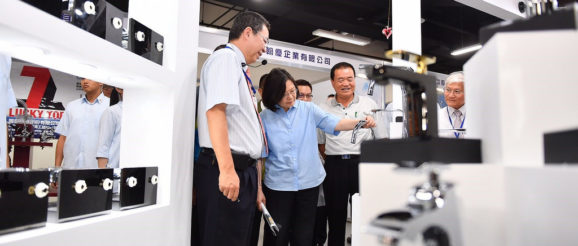Can technological innovation development in China out win Taiwan? – Taiwan Insight

Written by Chun-Yi Lee.
In the early 1990s, Taiwanese electronic factories in China acted as a ‘teacher’ for most of the domestic Chinese manufacturers. This means that most Taiwanese electronic factories went to China in the early 1990s for the Chinese cheap labour, and less regulated investment policies.
Taiwan is the world biggest manufacturer in terms of computer-related devices and equipment for laptops, integrated circuits, wireless equipment and flat panel displays. Since the 1990s, Taiwan has aimed to transform itself from a reliable Original Equipment Manufacturer (OEM) to Original Design Manufacturer (ODM). This means that Taiwanese high-tech companies not only want to do low-end assembling or packing, but also aim to establish their own brands. However, wishful thinking is not enough to establish branded-name companies in the high-tech sector. It requires huge support from the government in terms of both trained human capital and financial support for industrial upgrading. The establishment of Hsinchu Science Park (HSP) in the late 1980s was the beginning of the support from the Taiwanese government. However, one may argue that after the establishment of the HSP and the Industrial Technology Research Institute (ITRI) in 1973, there was not much more governmental input in Taiwan for the Information Technology and electronic related manufacturing sectors. The reason why the Taiwanese government cannot input huge resources into one single industry is due to the notion that, in a democratic society, all interest groups have equal share to governmental budget. The democracy brings Taiwan freedom but also fierce competition among different interest groups, therefore the IT industry does not have privileged governmental support as it had in the planned economy period during the 1970s, and throughout 1980s in Taiwan.
In the meantime, in the process of investment in China, Taiwanese factories had to transfer certain skills to the Chinese workers. Many factory owners reflected that after a few years of training, the Chinese workers left and established their own factories. With close connections with local officials, private Chinese factories can often get better deals than Taiwanese factories, which means the ‘students’ can earn more profits than the ‘teachers’. From the value chain’s perspective, it can be seen that the level of know-how from Taiwanese factories is not that difficult to achieve. This is the reason why the Chinese workers can easily copy and establish a more profitable factory outside of the original Taiwanese factory. In other words, if Taiwanese factories are in the higher end of the value chain, perhaps the know-how cannot be that easily learned, or, if the Taiwanese factories can keep upgrading their know-how, that would also prove difficult for the Chinese workers to copy and learn.
Apart from the Chinese workers’ capacity to learn fast, the most important part of the IT industry, this human capital, steadily flew from Taiwan to China during the late 1990s. The stagnation of Taiwan’s salary pushed the university-graduates to seek better development in mainland China. In March 2018, China’s Taiwan Affair Office (TAO) published 31 preferential policies to Taiwanese business and elites. This is only one of the examples of the Chinese government’s strategy to attract Taiwanese talents. In the field of IT, when I visited the Hsinchu Science Park, one of the managers told me: ‘It is very difficult for my colleagues to stay in Taiwan, Chinese companies would offer the same number of salary but in Renminbi (Renminbi: New Taiwanese Dollars is 1:5). Furthermore, the Chinese company also arranges children’s education and even partners’ works for the IT talents from Taiwan’. Under such privileged conditions, it is not difficult to understand why very few of the Taiwanese talents would reject such an offer from the Chinese companies across the Strait.
Nevertheless, innovation is usually associated with free-minded thinking. China certainly has abundant capital, and is thus able to attract global talent. Moreover, a single party state has much more autonomy to decide which industry the state will support. So far, the Chinese government does not have the same limits as the Taiwanese government, with its needs to satisfy different industrial groups in terms of distributing budgets. The autonomy to decide the budget’s distribution, allows for the Chinese government to concentrate the state’s resources to support high-technology development. Therefore, the number of science incubation parks increased rapidly in China. The question that this paper begs is, can radical innovation occur in a society which, most of the time, allows for only one version of news reporting? If the theory of open innovation is the principle for all innovation processes, why has China, as a single party state and with even tighter control of the state, along with the innovation progress on the hard ware buildings and number of patent rights, won over the democratic Taiwan? This is a question which I have yet to find an answer for, yet I hope to keep working on this topic for the foreseeable future, to test the ‘open innovation’ theory, and whether it can be applied in a one-party society, as is the case in China.
Chun-yi Lee is an Associate Professor at the school of Politics and International Relation (SPIR) at University of Nottingham. She is also the Editor of the Taiwan Insight and the Director of Taiwan Studies Programme. Image credit: CC by Office of the President, Republic of China (Taiwan)/Flickr
